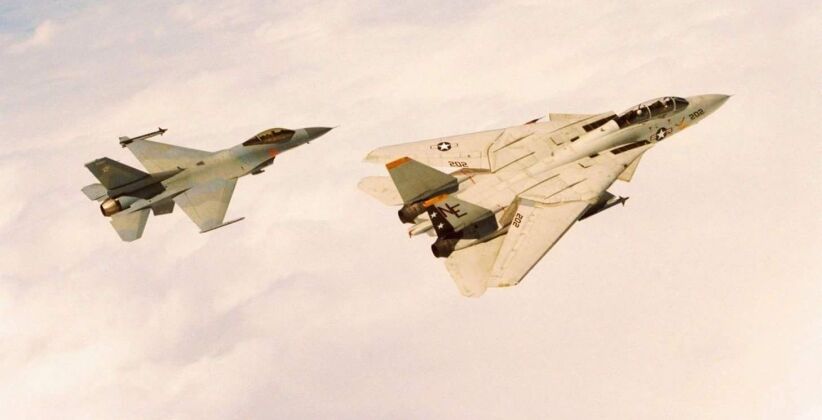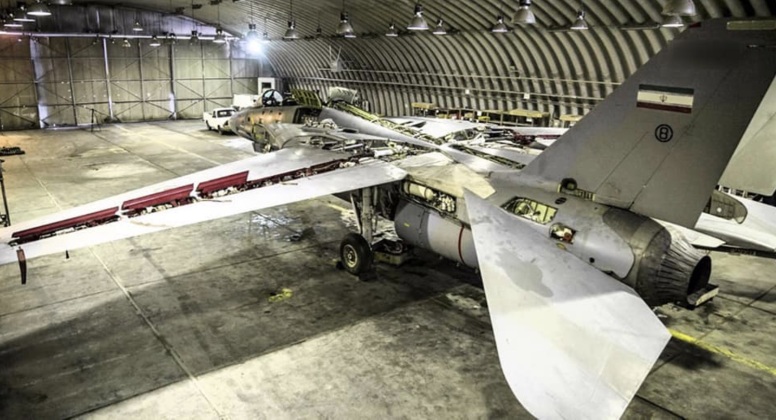In the early 1970s the Imperial Iranian Air Force sought to acquire a fourth generation heavyweight air superiority fighter to meet increasingly strenuous requirements for air defence, with this being a kind of asset no country other than the United States had in service at the time. Iran’s armed forces had long enjoyed a special relationship and maintained extensive connections with the United States Military, and the country was often the very first to receive new American weapons systems after they entered service. With one of the world’s largest defence budgets and an economy boosted by an oil boom, Iranian arms acquisitions were key to supporting manufacturers across the Western world, from production lines for the British Chieftain tank of which Iran purchased around 900 as by far the largest client, to the American F-4D/E and F-5E/F third generation fighters for Iran was a leading client in the 1970s. Iran’s position bordering the Soviet Union meant arms sales to the country also helped stretch the defences of the USSR by empowering a Western ally to its south.

The Iranian Air Force was the first in the world to receive fourth generation fighters after the United States Navy and U.S. Air Force, and following a visit of U.S. President Richard Nixon to the country in 1972 a competitive demonstration was held between the F-14 Tomcat and F-15 Eagle to decide which would best fulfil Iran’s military needs. The U.S. was pursuing five major fourth generation fighter programs at the time, with the F-14 and F-15 heavyweight jets at the very high end, the YF-17 (which later became the F-18) at the medium end and the F-16 and F-20 at the low end. Only four countries were ever permitted to purchase the heavyweight F-14 and F-15 during the Cold War, and Iran was expected not only to become the leading overseas client for whichever platform it chose, but also to acquire over 200 lighter F-16 jets to serve in a complementary role later on. Iranian financing for a ground based variant of the F-18 was also under discussion, providing its fleet with more fourth generation fighter classes than the U.S. Air Force itself. The F-14 was judged by the Iranian Air Force to better suit the country’s military needs than the F-15, and Iran soon after became the Tomcat’s first and only foreign client. An order was placed for 80 Fighters, several hundred AIM-54 Phoenix missiles among other compatible munitions, and ten years worth of replacement engines as well as critical support infrastructure. Training of Iranian air crews in the United States commenced shortly afterwards.

Iranian financing for the F-14 program was invaluable considering both the relatively small scale on which the aircraft was acquired by the U.S. Navy and the fighter’s immense cost far exceeding even that of the F-15 both to manufacture and to operate . When America’s own air national guard had concluded that the F-14 would be the ideal fighter for securing national airspace, it had notably found the aircraft cost prohibitive and settled on the F-15 indicating just how costly the aircraft was. The Tomcat’s advantages over the Eagle in air to air combat were overwhelming, with over triple the air to air engagement range, a far more powerful radar, and access to active radar guided rather than semi active radar guided air to air missiles which were much faster and carried larger payloads. The aircraft also had a far higher endurance, and allowed Iranian units to control far wider areas than the F-15 or any other fighter class would have. The Iranian Air Force was expected to place a followup order for 80 more F-14s in the 1980s.

Following the overthrow of the Pahlavi Dynasty in Iran in 1979 relations with the United States worsened significantly, and further acquisitions American weapons were no longer possible nor did the new government in Tehran have a strong interest in making such purchases. Iran’s F-14 fleet would nevertheless prove a critical asset when the county faced an Iraqi invasion in 1980, and were used to reliably defend vital strategic targets which they did effectively, forcing Iraqi fighter units to give them a wide berth due to their advanced missile capabilities. Only Iraq’s MiG-25 Foxbat interceptors proved somewhat survivable against the F-14, with the two seeing their first engagement in 1982 in which neither could shoot down the other. F-14s reportedly gained two MiG-25 kills while the MiGs downed a single Tomcat during the war. The Tomcat’s ability to fire AIM-54 Phoenix missiles meant all other classes of Iraqi aircraft could be eliminated at extreme ranges, with a missile in one incident reportedly neutralising a whole formation of three Iraqi MiG-23s with a single hit due to the sheer size of its warheads. The Iranian Air Force was nevertheless forced to use their F-14s sparingly due to shortages of both missiles and spare parts.

F-14s were responsible for downing more Iraqi aircraft than all other Iranian assets combined, with Iranian and Western sources claiming the Tomcats shot down 160 Iraqi jets for just three losses in air to air combat with seven more F-14s were lost due to technical failures. The F-14’s proneness to crashing was an issue the U.S. Navy also had to contend with for its own F-14s which had an outstanding record for crashes, with over 25% of the U.S. fleet of 633 aircraft – over 160 fighters – being lost in such accidents. Aside from the acquisition of three Soviet fourth generation fighter units in the late 1980s and early 1990s, Iran’s failure to more meaningfully modernise its air force assets has left the F-14 as its most capable fighter to this day, with the country developing a domestic industry capable of producing parts to service the Tomcats as well as the F-4 and F-5. Iran’s F-14 maintenance capabilities built on the basic infrastructure provided by the U.S. in the 1970s, with the country upgrading the fighters including with the integration of an enhanced indigenous derivative of the AIM-54 Phoenix missile – the Fakour 90. The new missile closely resembles the Phoenix, but reportedly has a much longer range and newer radar.

After the Iran-Iraq War the United States government went to extreme measures to prevent F-14 parts from reaching Iran, including destroying many of its own Tomcats following their decommissioning to avoid the possibility that any parts could reach Iran – the class’ only other operator. These measures were testament to the potency of the F-14 in Iranian service and to the United States’ perception of the importance of preventing them from operating. Improvements in 3D printing technologies after the turn of the century, however, allowed Iran to expand its operational F-14 fleet by producing parts more easily and bringing more aircraft out of reserves. The aircraft were also modified to be able to integrate Russian missile classes, with the possibility of replacing their troubled TF30 engines with the Russian AL-31 or AL-41 having been raised repeatedly but failing to materialise.
Iran has shown interest in acquiring new fighter classes, most notably the Chinese J-10C which although shorter ranged and a fraction of the Tomcat’s weight is a far more modern and sophisticated aircraft, but hesitancy to invest in such acquisitions has left the Tomcat with primacy in the country’s fleet. While the Iranian Air Force’s inventory is very far from outstanding in the 2020s, the F-14’s very long ranged engagement capabilities and large and powerful sensor suite make it a potential threat to adversaries today with the oversized AIM-54 and Fakour 90 still providing the longest engagement range of any air to air missiles in the Middle East. As Iran’s tensions with its longstanding regional adversary Israel remain high, and the large majority of Israeli fighters lack the range needed to reach Iran, this range advantage is particularly useful for its ability to neutralise support aircraft including tanker aircraft vital to facilitating a meaningful Israeli strike on Iran.
